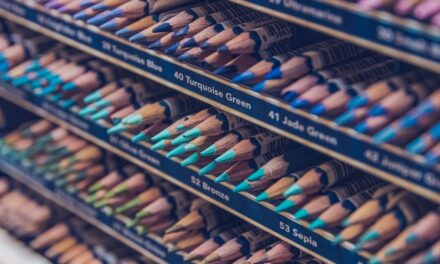Soft pastels have long captivated artists with their vibrant hues and versatile application. Unlike their oil pastel counterparts, soft pastels are composed of pure pigment combined with a minimal binder, resulting in a medium that allows for rich colour saturation and a velvety texture. This unique composition enables artists to create a wide range of effects, from delicate washes to bold, expressive strokes.
The immediacy of soft pastels makes them particularly appealing for sketching, as they can be applied quickly and easily, allowing for spontaneous creativity. The history of soft pastels dates back to the Renaissance, when artists such as Leonardo da Vinci and Raphael began to experiment with this medium. Over the centuries, soft pastels have evolved, with modern manufacturers producing a vast array of colours and formulations.
Today, artists appreciate soft pastels not only for their aesthetic qualities but also for their ability to blend seamlessly with other mediums. Whether used for preliminary sketches or finished works of art, soft pastels offer a unique approach to capturing the essence of a subject with immediacy and vibrancy.
Summary
- Soft pastels are a versatile and vibrant medium for sketching and drawing.
- When choosing materials for soft pastel sketching, opt for quality pastel paper and a variety of soft pastel sticks in different colours.
- Quick study techniques for soft pastel sketching include using light, feathery strokes and blending colours with your fingers or a blending tool.
- Practice techniques for soft pastel sketching involve experimenting with different pressure and layering to achieve desired effects.
- When blending and layering with soft pastels, remember to use a light touch and build up layers gradually for a smooth and seamless finish.
Choosing the Right Materials for Sketching
Paper Selection
A textured surface, such as pastel paper or watercolour paper with a rough finish, is ideal as it holds the pigment better and allows for layering. The tooth of the paper grips the pastel particles, enabling artists to build up colour without the risk of smudging or losing detail. Conversely, smooth paper may not provide enough grip, leading to frustration during the sketching process.
Pastel Quality
In addition to paper, the choice of pastels themselves can significantly impact the outcome of a sketch. Artists should consider investing in high-quality soft pastels that offer a wide range of colours and excellent pigmentation. While student-grade pastels may be more affordable, they often lack the vibrancy and blendability of professional-grade options.
Building a Well-Rounded Palette
Furthermore, having a selection of pastel brands can be beneficial, as different manufacturers may produce varying textures and colour qualities. A well-rounded palette will allow artists to experiment and find their unique style while sketching.
Quick Study Techniques for Soft Pastel Sketching
Quick studies are an excellent way to hone one’s skills and develop a personal style in soft pastel sketching. One effective technique is to focus on gesture drawing, which emphasises capturing the essence of a subject rather than getting bogged down in details. By using broad strokes and minimal lines, artists can convey movement and form quickly.
This approach encourages spontaneity and helps build confidence in handling the medium. Another useful technique for quick studies is to limit the colour palette. By selecting just a few complementary colours, artists can simplify their sketches and focus on composition and form.
This restriction not only fosters creativity but also allows for a more cohesive final piece. Additionally, setting a time limit for each study can further enhance efficiency and encourage artists to make bold decisions without overthinking their choices. These quick studies serve as valuable practice sessions that can lead to more refined works in the future.
Practice Techniques for Soft Pastel Sketching
To truly master soft pastel sketching, consistent practice is essential. One effective practice technique is to create a series of sketches based on a single subject. By exploring different angles, lighting conditions, and compositions, artists can deepen their understanding of the subject matter while developing their observational skills.
This method encourages experimentation and allows for the discovery of new techniques that can be applied in future works. Another beneficial practice technique involves working from reference images or life drawing sessions. Observational drawing helps artists develop their ability to translate three-dimensional forms onto a two-dimensional surface accurately.
When using reference images, it is important to choose high-quality photographs that capture details and textures effectively. Artists should focus on breaking down complex forms into simpler shapes, which can then be built upon with layers of pastel.
Tips for Blending and Layering with Soft Pastels
Blending and layering are fundamental techniques in soft pastel sketching that can significantly enhance the depth and richness of a piece. One effective method for blending is to use a blending tool, such as a tortillon or a piece of cloth. These tools allow artists to smooth out transitions between colours and create soft gradients.
When blending, it is essential to work gently to avoid disturbing the underlying layers of pastel. Layering is another critical aspect of working with soft pastels. Artists should start with lighter colours and gradually build up darker tones, allowing each layer to dry before adding more pigment.
This technique not only creates depth but also adds complexity to the colour palette. It is important to remember that soft pastels are opaque; therefore, layering can produce stunning effects when done thoughtfully. Experimenting with different layering techniques can lead to unique textures and visual interest in sketches.
Creating Depth and Texture in Soft Pastel Sketches
Contrasting Values for Depth
One effective way to achieve depth is by using contrasting values – dark tones juxtaposed against lighter ones—to create a sense of three-dimensionality. Artists should pay close attention to how light interacts with their subject, identifying areas where highlights and shadows fall.
Introducing Texture
Texture can be introduced through various techniques, such as scumbling or stippling. Scumbling involves applying a layer of pastel over an existing layer using a light touch, allowing some of the underlying colour to show through. This technique can create an interesting visual effect that adds complexity to the surface of the sketch.
Building Texture and Interest
Stippling, on the other hand, involves applying small dots or strokes of colour to build up texture gradually. By combining these techniques with careful observation of the subject’s surface qualities, artists can create rich, dynamic sketches that engage viewers.
Common Mistakes to Avoid in Soft Pastel Sketching
As with any artistic endeavour, there are common pitfalls that artists may encounter when working with soft pastels. One frequent mistake is overworking the pastel layers, which can lead to muddy colours and loss of vibrancy. It is essential to know when to stop adding layers; sometimes less is more when it comes to achieving a balanced composition.
Learning to step back from a piece periodically allows artists to assess their work objectively and make informed decisions about further development. Another common error is neglecting proper storage and handling of pastels. Soft pastels are delicate and can easily break or crumble if not treated with care.
Artists should invest in appropriate storage solutions, such as pastel boxes or trays with dividers, to keep their materials organised and protected from damage. Additionally, using fixatives sparingly can help preserve finished sketches without compromising the integrity of the pastel medium.
Taking Your Soft Pastel Sketching to the Next Level
To elevate soft pastel sketching skills further, artists should consider exploring mixed media techniques that incorporate other materials alongside pastels. For instance, combining watercolour washes with soft pastels can create stunning effects that enhance both mediums’ strengths. This approach allows for greater experimentation and opens up new avenues for creativity.
Furthermore, seeking feedback from fellow artists or participating in workshops can provide valuable insights into one’s work. Constructive criticism can help identify areas for improvement while also encouraging new ideas and techniques that may not have been previously considered. Engaging with an artistic community fosters growth and inspiration, ultimately leading to more refined skills in soft pastel sketching.
In conclusion, mastering soft pastel sketching requires dedication, practice, and an understanding of both materials and techniques. By choosing the right materials, employing effective practice methods, and avoiding common mistakes, artists can develop their skills and create captivating works of art that showcase the beauty of this versatile medium.
If you are interested in exploring different art mediums, you may also enjoy reading about the pros and cons of painting on linen versus cotton canvas. This article delves into the differences between these two popular surfaces and how they can affect your artwork. Understanding the benefits and drawbacks of each material can help you make informed decisions when choosing the right canvas for your next project.


